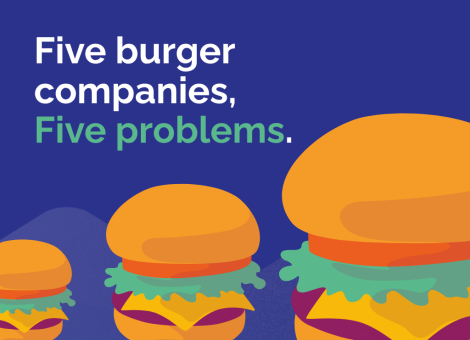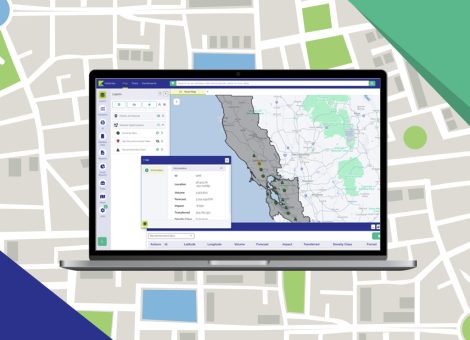Fuel focus: Fuel and convenience network optimization
Recognize the relationships between site elements
Despite all of this change, some things remain constant. Fuel and convenience retailers still need to entice consumers and maximize revenue from those consumers. That will always be the case.
To succeed in today’s market, you have to optimize your entire network, and that is a continuous process. Finding new locations in which to buy or build is part of that, but enhancing your existing sites and rationalizing your lowest-performing sites is just as crucial.
Every fuel station has several value-drivers that influence how attractive (or not) it is to consumers. Perhaps the most obvious of these elements are your overall brand and product offering, which shapes the consumer’s immediate perception (or preconception) of your site. When evaluating any single fuel site – whether yours or a competitor’s – consider the following:
- Does the brand have a solid reputation for customer experience and efficient management?
- Is the product mix strong and inventory ample?
- How does the pricing (fuel mainly, but also convenience items) compare against the nearby competition?
Then there are wider factors, related to geography and infrastructure:
- Is the site in an optimal location?
- How accessible is it from the road?
- Is the forecourt easy to navigate around?
- Can the fueling facilities meet consumer demand (at all times)?
On top of all that, there is the wider competitive landscape:
- Is the site a local dominator or an underdog?
- If the latter, who is leading?
- Which specific competitor sites are stealing volume from this site?
- Are all neighboring fuel retailers competitors, or are some serving totally different types of consumers?
To optimize your network’s performance as a whole and at individual site level, you have to embrace artificial intelligence. AI understands exactly how these value-drivers relate to one another, makes those connections for you. Using those findings, you can make the smart strategic choices that would otherwise be unfathomable.
Optimize your existing sites
Before you look to build or acquire any new sites, you should optimize your existing outlets.
During this process, you will…
- Gain an overview of customer behavior in your wider marketplace
- Identify a mixture of short-term and long-term opportunities for improvement
These findings will also inform your future expansion plans – potentially saving you from costly investment mistakes.
Measure your market efficiency
To quickly gauge your network’s current performance in the context of your wider competitive landscape, find out the answer to these questions:
“Does my share of sites match my share of volume and/or revenue?”
If you have 11% of the fuel sites in a given geographic spread, you should be capturing at least 11% of the market. Any less than that would indicate that your sites are underperforming in relation to the competition.
Perhaps their fuel pricing is more competitive, or their fueling facilities are better, or their location captures more traffic. There are countless possible reasons.
It might be that small tweaks to your product offering are all it takes to seize a higher share of the market revenue (seasonal promotions, a wider convenience product mix, and so on). On the other hand, you may have to make significant infrastructural changes. You will only find out by putting your competitors under the microscope.
- What are they doing that you aren’t?
- What are they not doing that you could be doing?
And so on.
Rationalize your network
Each site you operate comes with its own cost to serve, so you want to ensure that each one is pulling its weight.
Low performers with low potential
By closing the underperforming sites that are incapable of performing better, your network should become more profitable.
Defining your ‘underperforming’ sites is a little more complex than singling out those that are driving the lowest volumes. You have to analyze each site individually, comparing its volume performance against its volume potential.
What you want to identify here are the low-performing, low-potential sites that are located in poor or declining locations – to put it plainly, the lost causes. There is no way to turn these outlets around.
That said, you do have to consider what will happen if you close them. Could a large competitor come in, demolish your site, and build a new, far more attractive site in its place? And if that were to happen, would it sap volume from any of your other nearby sites?
High performers with low potential
The same is not the case for low-performing sites that have high potential. Even though these outlets are underachieving, and may have been for years, the right strategic tweaks will transform them. Keep hold of them no matter what.
“What happens if I close a high-potential underachiever instead of improving it?”
- Best-case scenario: You lose the volume you were getting, and you miss out on an opportunity to drive more volume
- Worst-case scenario: A competitor does recognize the site’s potential, acquires it, optimizes it for higher performance, seizes volume and revenue from your network (particularly your other nearby sites), and grows their own market share
It may take time and capital investment for you to get these underachieving outlets to where they need to be, but it’s better than surrendering them to competitors.
Expand your network
Network optimization isn’t just about refining your existing sites. To remain competitive at micro and macro levels, you need to have sufficient presence, with the right number of sites to drive your required volumes and turnover.
Choose the correct locations
The first step is deciding which locations you want to focus on.
Are you looking to break into entirely new markets, or do you want to open additional sites in areas where you already have a presence?
It might be that you want to do both, depending on your competitive landscape.
When analyzing the competition for network expansion purposes, focus on these three elements:
- Volume – How much fuel are they selling? But before you start to make changes based on this, you need to know your own sites very well, and you need to bear in mind that comparing like-for-like volumes alone is unwise – you have to evaluate all the other factors too.
- Value – What unique value do they offer to their consumers? Knowing this means that you understand how your own value proposition differs to theirs, showing you the weaknesses you need to address – or the gaps you need to fill. It will also highlight your strengths, which you may be able to reinforce further.
- Market perspective – Do you understand where you fit into the wider market, and who the dominating retailers are (and why)? Without this knowledge, you can’t tell whether you’re expanding into the right locations, and you also risk cannibalizing your own volume (more on that later).
Identify your true competitors – and reevaluate regularly
You shouldn’t automatically assume that all nearby retailers are competitors.
If you are an emerging brand operating in a handful of Northeast states, you aren’t necessarily competing for the same consumers as the global titan oil brands. They have their audience and you have yours. There may be some crossover, but not as much as there would be between you and another new brand that matches your size.
Misconstruing your competitors has three potential consequence:
- You miss the real opportunities
- You waste time
- You waste capital
Treat competitor analysis as a continuous process rather than a one-off exercise. As your network and your brand grow, you will likely surpass certain small competitors and find yourself competing with larger, more established retailers.
Acquire high-potential sites
As well as keeping hold of your existing high-potential sites, you should look to acquire more of them, because these present the most opportunity for improvement.
For example, let’s say you’re looking at two potential acquisitions that are situated half a mile apart.
Site A is selling 70,000 gallons of fuel per month, whereas Site B is selling 80,000.
On that basis alone, you would conclude that Site B is the one to go for.
But what if you were to dig deeper and discover that Site A’s potential is in fact 90,000 gallons, while Site B’s potential is actually only 60,000? That would change matters, wouldn’t it?
“What’s wrong with acquiring overachievers?”
Nothing, as long as you know how to sustain the overachievement.
At face value, it seems like a good strategy to take over sites that are making more money than they should be, because they’re more profitable. But for this to work out well for you in the long term, you need to know exactly why they’re performing so well and how you can replicate that once you take over – otherwise you will more than likely fail.
Using market intelligence and predictive science, you can evaluate an acquisition target the same way you evaluate your own sites, and will be able to answer the following kinds of questions with confidence:
- Has the site reached saturation?
- How can we achieve higher volume and/or revenue?
- Is there room for expanding the plot further?
- Would additional facilities (such as a quick-service restaurant) raise the value proposition?
- What would happen if we added two more fuel pumps?
Optimism bias is an all too common pitfall, often caused by intuition or past experience (sometimes both). Even if you’ve been working in fuel retail for decades, you won’t consistently predict outcomes based on your gut feel or your recollections of situations. Your only real friends are data and science, because they are objective and impartial.
Determine the payback period
Whether building or acquiring, you’ll want assurance of return on your investment.
If you have sophisticated network planning software at your disposal, you can carry out simulations that tell you what the payback period would be for any given new site.
It’s then up to you to compare the payback period against your strategic requirements and decide whether the project is ultimately viable.
Avoid network cannibalization
When building or acquiring sites to increase your market share in a given area, you must ensure that you don’t start to cannibalize yourself.
These mistakes are easy to make, especially when you’re simply trying to elevate yourself in a competitive market. You have to ensure that your individual site strategies – and any adjustments you make to them – remain aligned with your overall market objectives.
Overconcentration
If your sites become so concentrated that they surpass consumer demand, they will steal volume from each other – which then means you’re wasting money running additional sites that don’t increase your overall volume.
Individual site actions
Making individual site improvements can also cause cannibalization if it results in inconsistent customer experiences. For example, if you add a convenience store to Station A but not to Station B, and these two sites are only three miles apart from each other, Station A and its enhanced offering might draw consumers away from Station B. Although the addition of the convenience store should mean that you generate more overall volume and revenue, this might not be enough to cover the cost to serve Station B.
The best prevention tactic: Use predictive science
Due to the complexity of the relationships between site elements, you will only foresee cannibalization if you use the right tool to validate any buy-or-build decision – even if it appears to be a no-brainer. Running simulations through networking planning software will help you answer questions such as…
- “What will happen if we build a new large-format store and increase the number of fueling positions?”
- “Or what if we only build a medium-sized store?”
- “What if we open a new store and close an underperforming one in the same vicinity?”
- “What if we open five new stores in this area, or just two?”
Without a tool that answers these questions for you, it’s all guesswork.
Learn from your competitors
You shouldn’t blindly mimic your bigger and more established competitors, because what works for them might not be feasible or cost-effective for you. But with the right understanding of how each competitor relates to your business, you can glean insight from their strengths and successes (and their weaknesses and failures, for that matter) – and use this intelligence to enhance your own offering.
To put competitor activity into context, you must…
- Understand your market landscape and your own place within it
- Follow and anticipate greater market trends – in other words, keep your finger on the pulse
- (Once again…) Be able to discern your true competitors at any given time
Capitalize on competitor weaknesses, failures, and oversights
This goes back to the question, “What are they not doing that we could be doing?”
Look at their merchandising and their facilities to see how you can increase your own value proposition and gain the upper hand.
Some of these opportunities will be inexpensive quick wins, whereas others will require capital investment. Here are some examples of both:
- Would a walk-in beer-cooler drive more convenience revenue?
- If you were to add four more fuel pumps to your site, would this make you the biggest and most consumer-friendly fuel station in a five-mile radius?
- Would a high-spec coffee machine entice more commuters?
- Would the addition of a quick-service restaurant make your entire site more attractive to passing consumers?
Making big changes on the forecourt can be costly, but that’s what planning software is there for: to predict outcomes with accuracy, and ensure that every strategic investment you do make will deliver ROI.
Network optimization: Key advice and best practice
Start with the end in mind
What are your long-term strategic goals? Network optimization is a long game, so you can’t rely solely on making quick wins and reacting to competitor activity.
Secure the best locations
Use a network planning tool that shows you prime locations for building new sites or acquiring well-situated underperformers. Get to the bottom of what is driving demand at these locations, and optimize accordingly.
Arrive at the right offering for each location
Retail is detail. You will maximize volume and revenue if you know which products and which facilities to focus on at each site. Of course, the tricky part is making sure you don’t cannibalize in the process.
Base all decisions on data
When considering any strategic decision, no matter how small it appears to be, find analytics and proven facts to back up your instincts and assumptions. You’ll often find that you were correct all along, but sometimes the data science will prove you wrong.
Use the right data and the right analytical models
Using artificial intelligence and data to predict outcomes is the present and future of network planning, but make sure you keep sight of the data points that are truly relevant. Focusing too much on unimportant data can lead you astray.
Strive for continuous improvement
Any retailer that rests on their laurels is only going in one direction: backward. Even if you are performing well and you are making huge improvements to your network, keep looking for ways to make it even better. Never stop developing your offering, and always question what is constraining demand at your sites.
Read more articles about:
Location intelligenceRelated posts
Location intelligence
Five burger companies, five problems
These burger brands had challenges from international growth to understanding franchise locations cannibalization,...

Location intelligence
Market Optimizer: Demo video
Market Optimizer allows users to strategically grow their network in existing markets while balancing revenue...


